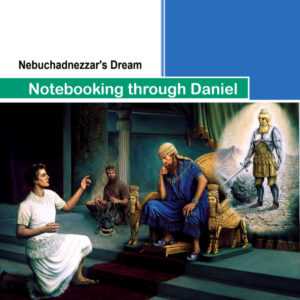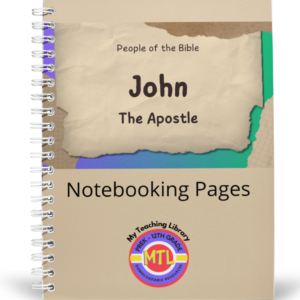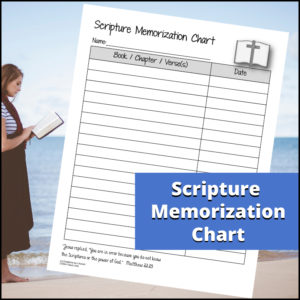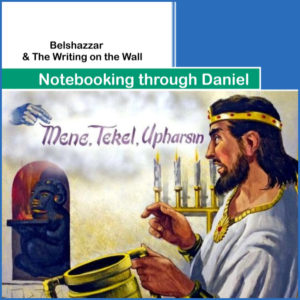Description
$5.00
Memory Verses for Girls is a 20 week course for girls and designed to help girls develop a healthy self-esteem and Godly character through the study of God’s Word.
Includes:
– Record sheet to keep an overall record of when each verse study was started and completed
– 20 Memory verses selected specifically for this study
– Weekly Verse Journal worksheet (Day by Day study and reflection)
* Day 1: Write the Scripture
* Day 2: Unfamiliar words work
* Day 3: “In your own words, how you you tell someone what the verse means”
* Day 4: Plan to implement this truth in your own life
* Day 5: Recite to an adult and both sign to show completion.
Only logged in customers who have purchased this product may leave a review.

Chapter 2 of Daniel: In the second year of his reign Nebuchadnezzar has a dream. When he wakes up, he realizes that the dream has some important message, so he consults his wise men. Wary of their potential to fabricate an explanation, the king refuses to tell the wise men what he saw in his dream. Rather, he demands that his wise men tell him what the content of the dream was, and then interpret it. When the wise men protest that this is beyond the power of any man, he sentences all, including Daniel and his friends, to death. Daniel receives an explanatory vision from God: Nebuchadnezzar had seen an enormous statue with a head of gold, breast and arms of silver, belly and thighs of bronze, legs of iron, and feet of mixed iron and clay, then saw the statue destroyed by a rock that turned into a mountain filling the whole earth. Daniel explains the dream to the king: the statue symbolized four successive kingdoms, starting with Nebuchadnezzar, all of which would be crushed by God’s kingdom, which would endure forever. Nebuchadnezzar acknowledges the supremacy of Daniel’s god, raises Daniel over all his wise men, and places Daniel and his companions over the province of Babylon.
This notebooking resource has been designed for students to write about, give a report of, and comment on chapter 2 of the book of Daniel.

John the Apostle was one of Jesus’ closest friends and a leader of the early church. He was a fisherman, follower and disciple of Jesus, wrote 5 books of the New Testament and was martyred. As students study John, they can use these beautifully designed pages to create a lasting project detailing what they have learned. (Video Preview)
What’s included:

If you have students or children that memorize scripture and you want to keep a record of the verses they learn, here is an easy to use resource for you!

In Chapter 5 of the Book of Daniel, Belshazzar plays a significant role in the tale of Belshazzar’s feast, a variation on the story of Nebuchadnezzar’s madness showing what happens when a gentile king does not repent. During a feast, Babylonians eat and drink from the holy vessels of Yahweh’s temple, and “king” Belshazzar sees a hand writing the words mene, mene, tekel, upharsin on a wall. Daniel interprets the writing as a judgment from Yahweh, the god of Israel, foretelling the fall of Babylon. Daniel tells Belshazzar that because he has not given honor to God, his kingdom will be given to the Medes and Persians. Belshazzar is killed that night, and Darius the Mede takes the kingdom.
This notebooking resource has been designed for students to write about, give a report of, and comment on chapter 5 of the book of Daniel.


Reviews
There are no reviews yet.